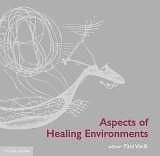Aspects of Healing Environments
Τhe aim of this book is to give a working knowledge on the area of healing environments to students of architecture since there is no substitute for expertise and experience. The terms 'healing' & 'therapeutic' are complicated and extremely broad and refer to procedures that support the notion/concept of 'well-being'. Aspects as "Design got right can transform people's lives," or "Design got wrong can be just a catastrophe" are well accepted today not only from architects but also from politicians and the public. Patterns of care are changing. Most of the environment built specifically for health-care is often too unsuitable for ordinary people. The provision of hospitals is highly regulated and the users have specific needs. On the other hand, hospitals today can rent hospital space for the office-like or hotel-like parts of the healing process. But also the neighborhood has become a setting for care. Bad design is particularly harming when it comes to hospitals and health care buildings. During the 1950's new ideas were developed to change the face of health care buildings in order to house the new and rapidly changing medical technology but much more concentrated on the user's needs. Patient-focused design became and still is the basic principle for planning and designing health care buildings, combined with an attempt to involve health care personnel in the design of their own hospitals. Going back to the 1950's most of hospital architects deployed pure space, light and proportion just to attain the right environment. Recent illustrated examples rarely achieve a similar standard. As an exception, Medplan's Oslo's University Hospital carefully planned an internal hospital street to humanize a building of a considerable size. An objective was also to change peoples' perception about a healing setting (a hospital) and to create the feeling of a public building. Today, health care buildings often embrace the role of civic buildings. This can be accomplished by transforming the building's context to focus on both healthcare and community activities as well as the well being of patients, staff, visitors and the community. The use of new technology means that many hospitals have to be reconfigured soon after completion, thus health care design must be more flexible to adapt to healthcare changes in the next decade and beyond. This book applies to a range of perspectives which have emerged from different approaches-theoretical matters that examine the practice of hospital planning and design, the non-institutional care (e.g. the elderly), design concepts for parts of health facilities and small clinics, public spaces as healing places, as well as lighting and color (speed recovery, de-stressed factors) and the ancient experience on the matter. Hospital architects and designers have to consider more the five senses; studies have indicated that a well-designed therapeutic environment helps people to recover quicker, thus reducing the running cost of the facility. It is largely agreed upon that environmentally responsible design positively affects the human condition so the healthcare architect's prime duty is to create environments that are more "human". Admittedly, the above facts do not mean that health facilities' designers, managers and users know exactly how to realize a healing environment. Every building must be tailored to site and climate, culture and context and most importantly, architects must be sensitive to the environment they are trying to create. Contents: - Rosemary Glanville, "Designing an healing environment" - Fani Vavili, Sofia Stravela, "Hospital building: an overview" - Hans-Evert Gatermann, "Architecture, Design & Arts: Parts of the Healing Process" - Helina Kotilainen, Pavi Topo, Tuula Hurnasti:"The living environment & assistive and other technology for people with dementia in Finland" - Hans Eggen, "The healing environment found in a private clinic: Beau-Site, Bern, Switzerland" - Christoph Gatermann "Designing Obstetric facilities" - Fani Vavili "Ward Units: What is new?" - Theodora Antonakaki "Light for health care -lighting the healing environment" - Iris Aravot, Osnat Rosen Kremer "Stress Relief in Environments of Narrative and Mobility" - Ge Lun, Qi Daiwei "Healing environments in China" - Fani Vavili, Eve Dova "Asklepieia: Greece's first healthcare facilities"
- ISBN978-960-456-150-6
- Ημ/νια Έκδοσης2009
- Σελίδες155
- ΔέσιμοΜαλακό εξώφυλλο
- Διαθέσιμες Γλώσσες
- Θεματολογίες Βιβλίου
- Επιμελητής
- Εκδότης

